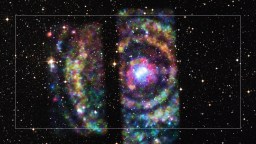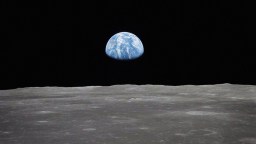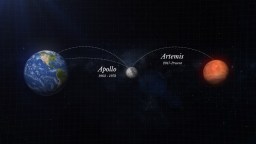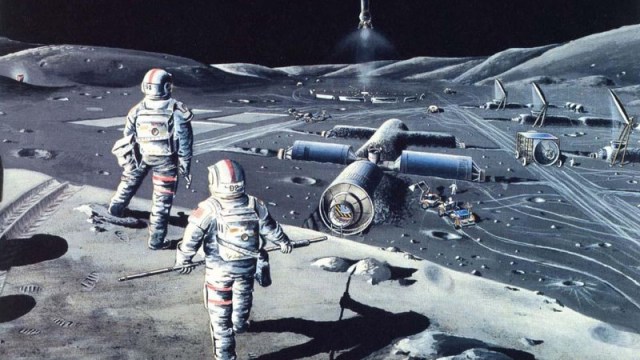Are we alone in the galaxy?
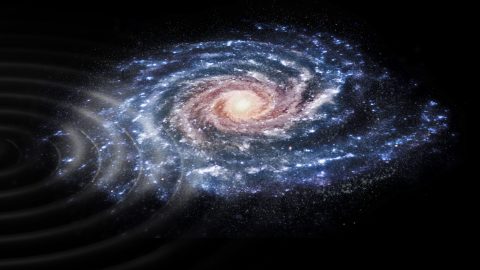
(IMAGE AT TOP: ARTIST'S IMPRESSION OF A PERTURBATION IN THE VELOCITIES OF STARS IN OUR GALAXY, THE MILKY WAY, THAT WAS REVEALED BY ESA'S STAR MAPPING MISSION, GAIA. CREDIT: ESA)
At least astronomically speaking, we live in lucky times.
In fact, our species thrives on this planet right now because our energy-giving star, the sun, allows us to. Were the sun to heat up by just a few percent, we would be toast, quite literally. Oceans would evaporate, rocks would glow and melt, life wouldn’t be viable.
During its 4.6 billion years of life, Earth has been many different kinds of planet: a water world, a frozen world, a tropical greenhouse, a truly hellish place. But since the end of the last Ice Age, some 12,000 years ago, Earth became a combination of all of its previous incarnations, allowing for the amazing diversity of life that we see.
Given that we have learned in recent years that most stars in the galaxy have planets, an obvious question is, How many Earth-like planets might be out there?
Thanks to recent information, we can now take a reasonable guess.
The European Space Agency Gaia Spacecraft is expected to plot the position of up to 1.7 billion stars and 70,000 exoplanets (outside of our solar system) in the Milky Way. The Gaia mission estimates that somewhere between 2 and 12 of those planets are are potentially habitable. And that data is gleaned from the approximately 1 percent of the galaxy that Gaia is able to observe.
Earlier analysis from NASA’s Kepler mission—which came to an end just this week—suggested that as many as 17 percent of the Milky Way’s billions of planets might be habitable. But Gaia’s data suggests a much lower percentage. Still, far beyond Gaia’s reach, there could be millions of potentially habitable planets. And if we include moons as possibly habitable platforms, the numbers go up even more.
Of course, relating the probability of life in an alien world to the existence of surface water is a very coarse first step. There are many factors that can both enhance and compromise life on a planet, making a real estimate much harder. For example, in the pro-life corner, there could be life outside the habitable zone in the subsurface, as might be the case with Europa, Jupiter’s moon with an ocean under a mile-thick ice crust. Or there may be subsurface water reservoirs—like wells—tapped by creatures on the planet or moon. Or, more on the sci-fi side, there may be forms of life that don’t need water at all, either because they evolved in a different medium, or because they are no longer organic but machine-like.
On the against-life corner, there are many other factors beyond liquid water that play an important role in the existence of life: the planet’s mass and atmospheric composition, the relative abundance of the right chemical elements, the existence (or not) of a magnetic field that would shield surface life from cosmic radiation, the existence (or not) of moons that influence tidal motions and seasons, the planet’s relative climatic stability, and so on.
The search for life in other worlds is a young (and very exciting) science. Fortunately, short of a landing mission—very impractical outside our solar system due to the enormous interstellar distances—there are more direct ways to find signatures of life in other worlds. For example, satellites and even very powerful Earth-based telescopes could probe a planet’s atmospheric composition to search for telltale signs of life such as water, carbon compounds, oxygen, ozone, and even chlorophyll. Or, if we are really lucky, just as an alien astrobiologist could, perhaps, spot the Great Wall of China or the shifting night lights on Earth’s surface, we could detect large-scale engineering projects on their planet. And then there is always the Search for Extraterrestrial Intelligence (SETI) initiative that could return a positive signal any day.
Meanwhile, we must contend with—borrowing the title of Paul Davies’ inspiring book—the eerie silence. Until further notice, we remain alone, a possibility that is at once both frightening and inspiring.
The post Are We Alone in the Galaxy? appeared first on ORBITER.
